The name Marika can often stroke memories in the minds of some of the older players of this game. Though long since power-creeped, there was a time when Marika was feared by all. Back in those days, Nisekoi was at full power and considered to be one of the strongest sets at the time. Released back in 2014, Nisekoi was a powerful set that could even be considered to have changed the way the game was played entirely.
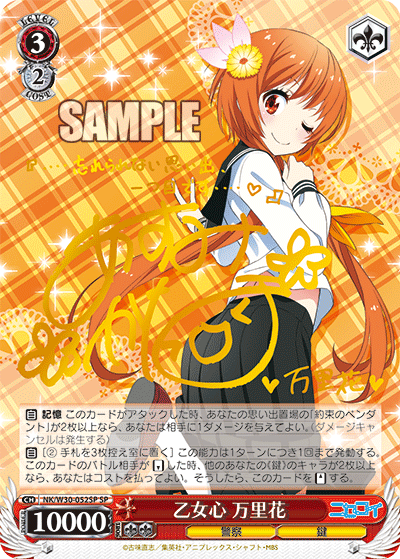
Marika, shown above in all her glory, was a set defining card. She carried two simple abilities. As long as you met her first recollection condition, which is not hard to do since the event is a staple for the deck anyway, she would have a damage ping whenever she swung. Furthermore, her second ability would let you pay her costs and re-stand her if you were to get a reverse. Reversing wasn’t far too difficult back in those days considering the variability of the game and lack of consistent filters in each series. The game was also fairly slow without the powerful additional soul input in the modern age and low hand advantage.
Given the right conditions, Marika was a single card finisher with up to four damage instances alone. Even by today’s standards, as of this writing, that’s quite a bit of damage from a single card.
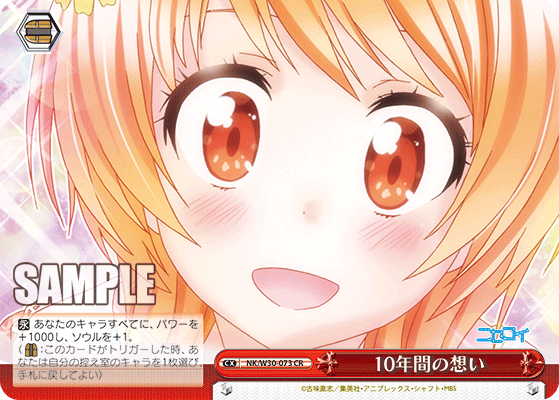
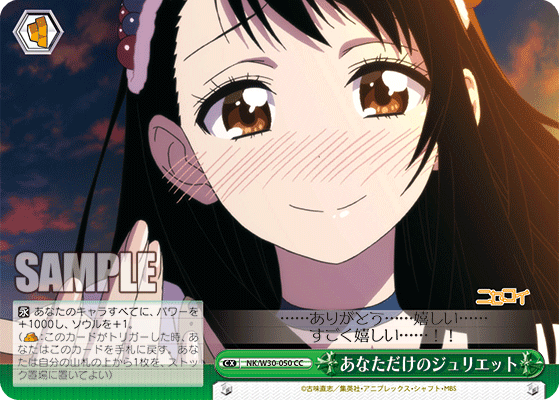
Marika’s re-stand cost is pretty expensive, especially on the hand side, but hand advantage triggers like the ones above were run during the battle phase in hopes of gaining more hand during the combat step. As such, in the right conditions, a second or even third Marika would be able to get her ability off for a total of twelve damage instances.
A few things must be noted as to explain why Marika had such a defining history amongst players. The most important note to understand is the difference in the environment of the game then versus now. When Nisekoi was released, defining game finishers were rather rare and often heavily costed. Free abilities to deal damage was highly sought after.
Secondly, I would argue that Nisekoi became the one of the first, if not the original, start of a concrete structured deck. During the time of Nisekoi’s release, card profiles were not exactly unified or distributed equally amongst sets, even those around Nisekoi’s release. Nisekoi had access to many modern tools that are taken for granted, which did not exist during pre-Nisekoi era.
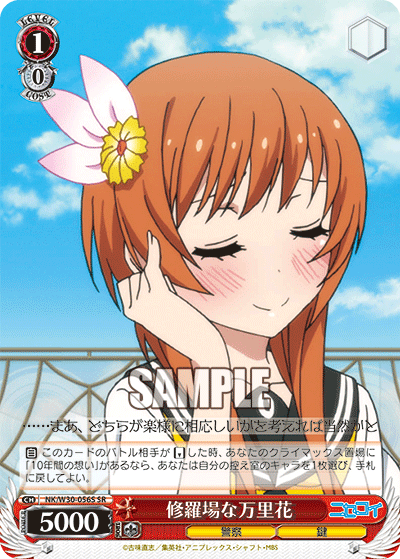
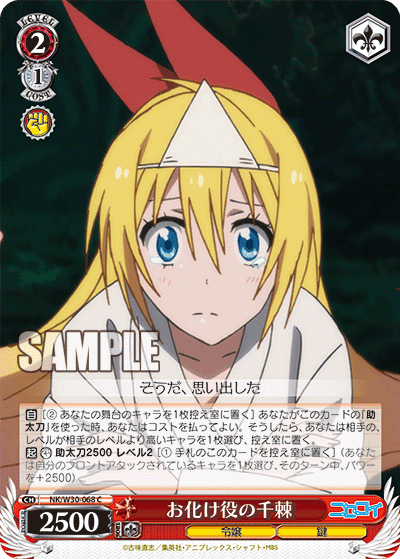
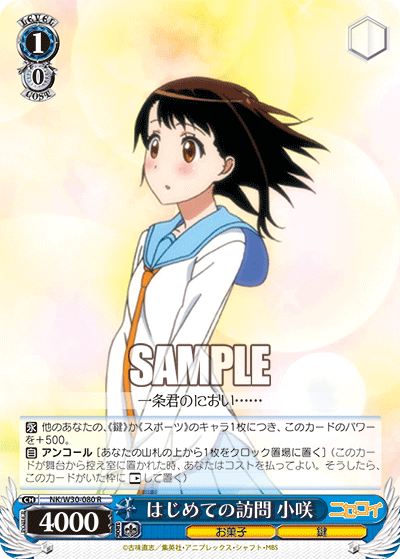
NK/W30-068C お化け役の千棘 (center)
NK/W30-080R はじめての訪問 小咲 (right)
As a set, Nisekoi had access to many tools that gave it an edge compared to other sets. Nisekoi also had a free advantage engine early that did not cost stock, something very innovative and new at the time as shown with the level 1 Marika combo.

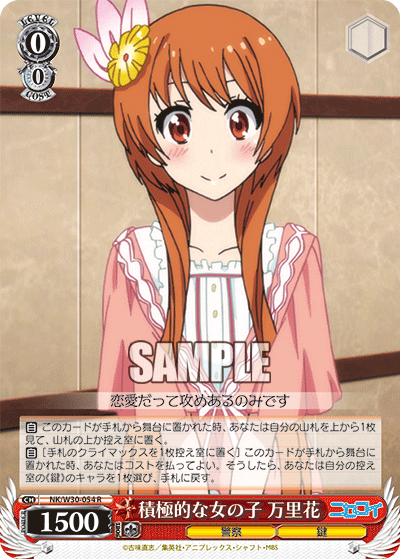
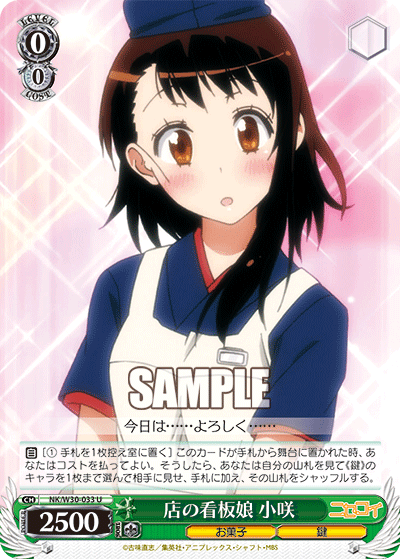
NK/W30-054R 積極的な女の子 万里花 (center)
NK/W30-033U 店の看板娘 小咲 (right)
Now what made Nisekoi strong was the fact that it carried powerful filter effects as well which aided in making the deck very consistent. Furthermore, unlike some older series at the time, the entire set was essentially unified by the exact same trait, Key (鍵). And as a result, deck building rarely had to worry about trait constraints which were predominant in older series at the time, only worrying realistically about colour requirements.
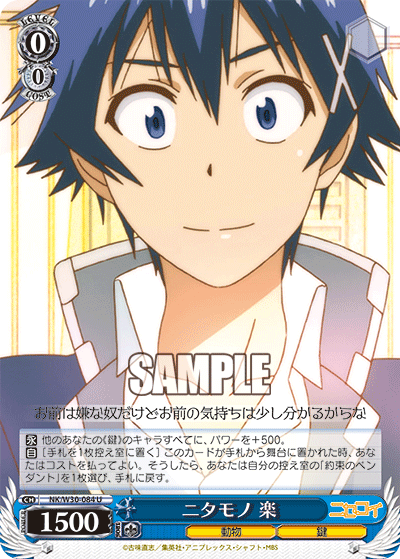
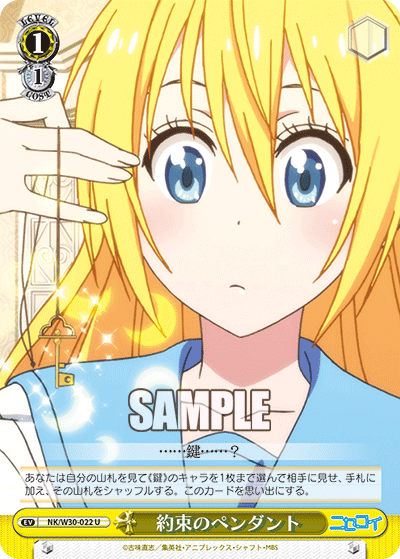
Nisekoi also had a very powerful mechanic that circled around the pendant event on the right in memory. Raku was a card that was a great supplement to the deck that helped ensure that the deck’s pendant conditions were almost always fulfilled. Nisekoi’s pendants were consistent and powerful. They had powerful effects on their own, even without considering running the other cards that carried effects with them in memory. Furthermore, the pendants could be ran in any ratio and of any colour considering they all shared the same name that Raku fetched, allowing for more variability.
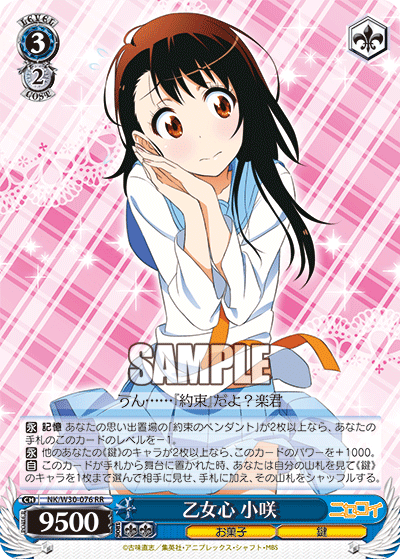

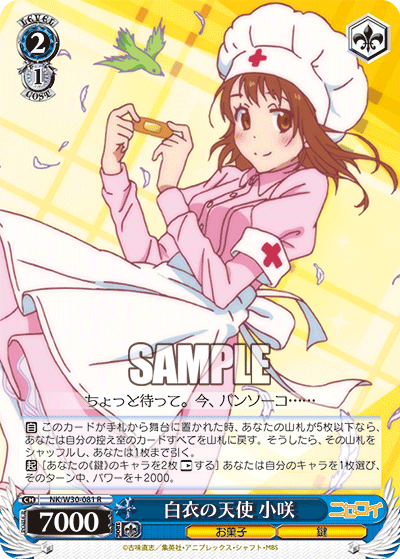
NK/W30-005R 週末のデート 千棘 (center)
NK/W30-081SR 白衣の天使 小咲 (right)
Pay-offs for fulfilling the pendant condition were great at the time. The deck had, as stated before, access to tools of the modern age. It had early plays as shown from the level 3 Kosaki. The 1/0 Chitoge was a powerful 6500 with pendant in memory, making her quite a large beater for most decks to challenge at the time. The deck also had access to a free-fresher with an even more powerful effect than most which let you draw a card while mitigating refresh damage.
Personally, I think the main reason for Nisekoi’s power lay in its tools along with the Marika that lead to its strength during its peak period. Nisekoi carried one of the earliest modern deck building that resembles most decks nowadays. It had an early advantage combo that was costless, several filters, a powerful top-end, and many ways to maintain hand advantage while pushing for game.
Eventually, the set was hit by the ban-list with the free-fresher, pendants, and Raku on a choice of three. Furthermore, Marika was restricted to a single copy unless you were playing pure Marika (this was a very unique ruling that applied solely to her). Players found ways around Raku by mostly playing promotional cards which were not considered until then (shown below).
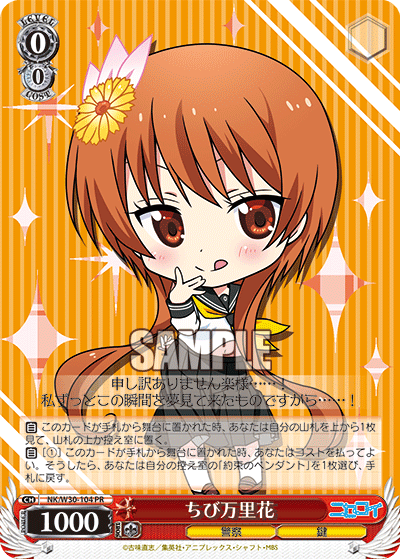

All in all, Nisekoi definitely left a mark in Weiss’ history. At some point after the updated 2014 ban-list was announced, a player took their foiled level 3 signed Marikas and cooked them on top of a grill. He was subsequently removed from competitive play. Even now, you may even find an old player or two that shudder at the mention of Marika.